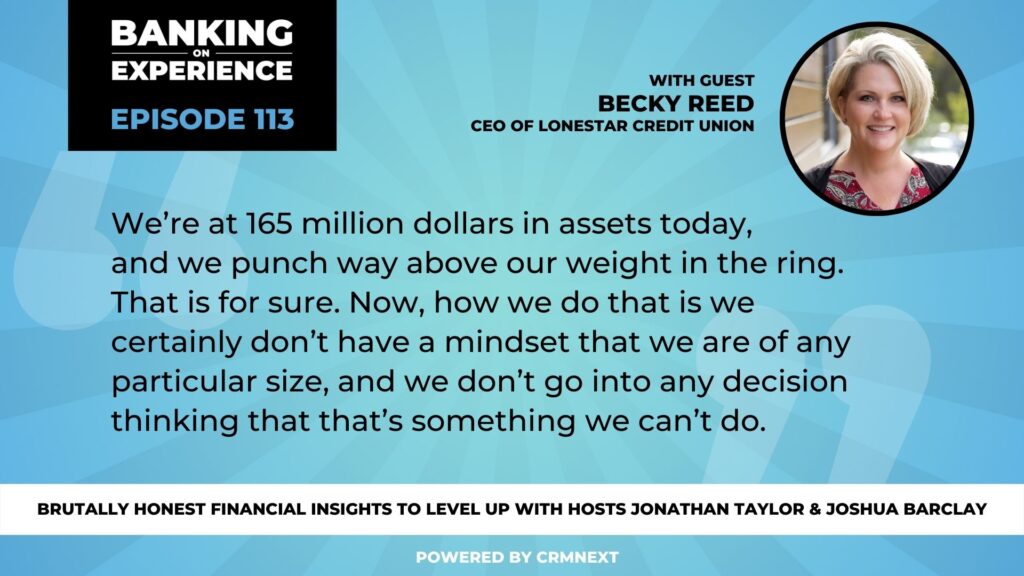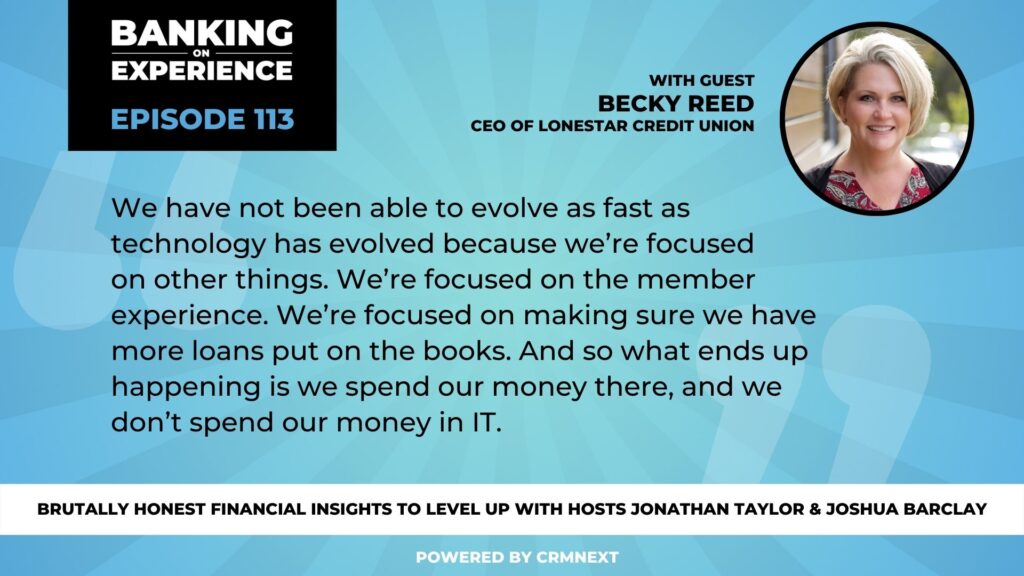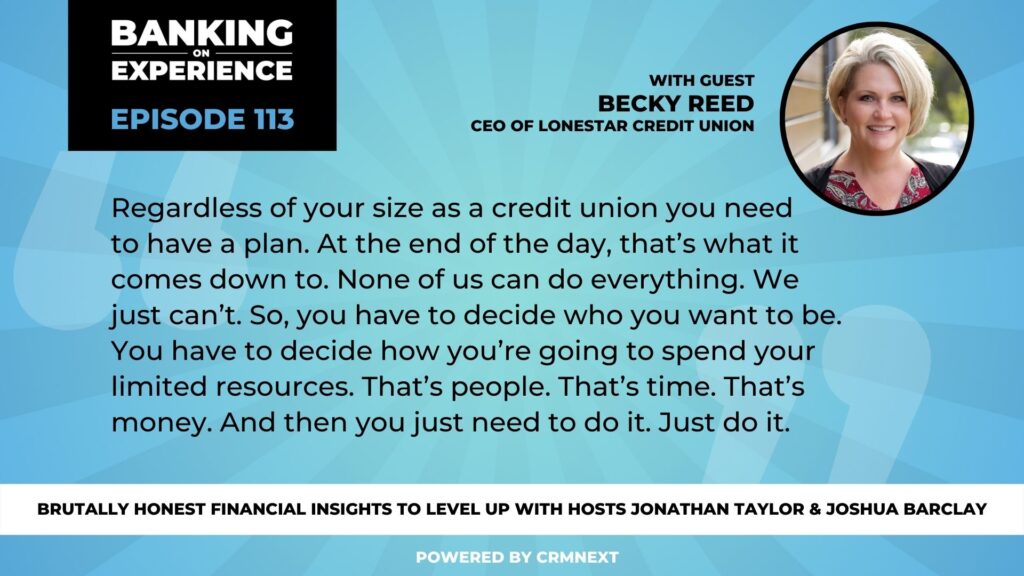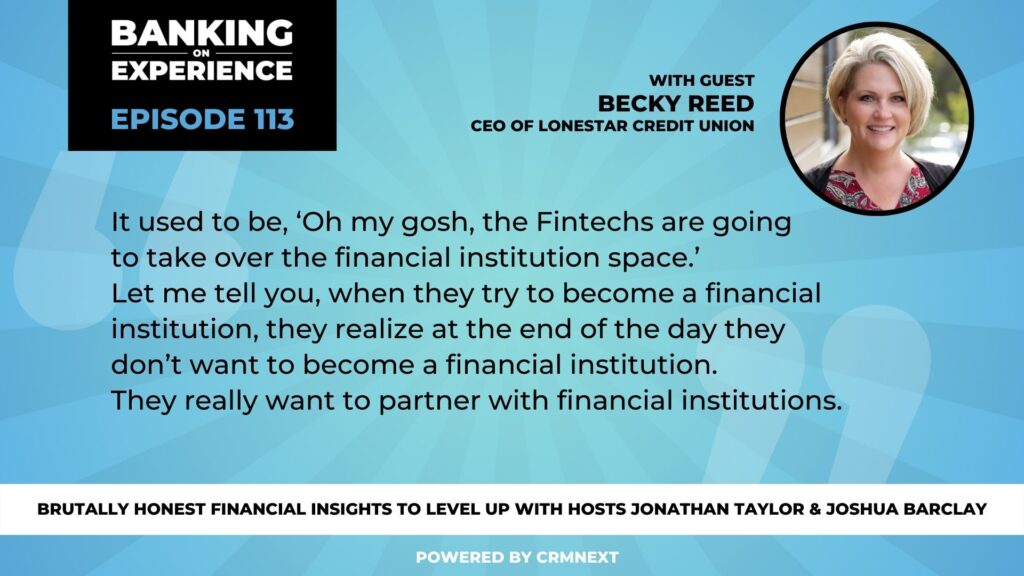Small credit unions are increasingly feeling the financial squeeze. New compliance requirements often mean looking at larger vendors for the best tools. But those vendors are often targeting customers at a much larger scale.
Becky Reed, the CEO of Lonestar Credit Union, chatted with the Banking on Experience team about ways your Credit Union can navigate today’s uncertain waters, and how size shouldn’t limit you from employing a modern technology stack.
A Little About Becky Reed
Lonestar Credit Union’s CEO started her career in retail management, working in a record store.
While she didn’t start out in credit unions, Becky is known to say, “I wasn’t born here, but I got here as quick as I could.”
She broke in as a financial service officer and quickly moved up to branch manager. She arrived at Lonestar in 2014 as the COO. Like a lot of credit unions at that time, Lonestar faced significant technology challenges.
Going to the Cloud with Pure IT
When faced with the daunting task of pinpointing Lonestar’s technology stack issues, Beck transitioned Pure IT to a CUSO to help her meet her vision of moving the credit union to the cloud. Drawing on a fellow record store employee from the 90s, the new CUSO helped to meet that goal.
The Challenge of Finding Help
A lot of times credit unions can get caught up in asset size when working with technology vendors. Rather than trying to help a credit union meet their vision for technological modernizations, vendors come in with their own agenda, selling hardware rather than meaningful solutions. Becky believes credit unions need to focus on their needs and search for the right company, even if that means pursuing a vendor that typically only works with billion-dollar institutions.
Why credit unions struggle with the Cloud
In the broader enterprise space, the transition to the cloud isn’t so much a migration as a sprint for many organizations. Credit unions can often lag behind. Part of this is a matter of habit. Credit unions want to keep using what works. Another element is that credit unions aren’t always scalable. A lot of credit unions can’t afford a CTO. They rely on homegrown IT staff. This can lead to a view of technology that’s laser-focused, but often with a narrow purview of the wider world of technology. All of these issues can prevent credit unions for using member-benefitting technology.
Overcoming the “too small” mentality
Many smaller credit unions put limitations on themselves, particularly around CUSOs. Regardless of asset size, there’s no reason a credit union can’t invest in or start a CUSO as long as it’s part of a strategic plan. For Lonestar, this meant embracing beta testing.
The future with Fintech
Fintech startups used to be seen as the enemy. But the reality is, most fintech can align well with credit unions as long as they can both jump through some flaming hoops. Once things are clearly outlined, these relationships can provide incredible value for a credit union and a crucial proving ground for fintech startups.
Data with a purpose
Data may be the new oil, but data for data’s sake are not only irrelevant, they’re overwhelming and distracting. Becky warns that credit unions should start with the question they want data to solve. Does your answer serve every department? While technology can be disruptive, having representatives from all departments can make it clear what the benefit of a shift will be before implementation.
As Becky sees it, credit unions can survive with a limited budget by being creative and resourceful. They can use technology to their advantage, and they can focus on providing high-quality member service to “punch above their weight.”

Listen to the full episode here.
Learn More about CRMNEXT
Get your free demo and see how the right CRM can have a huge impact at your credit union. Visit crmnext.us today.







